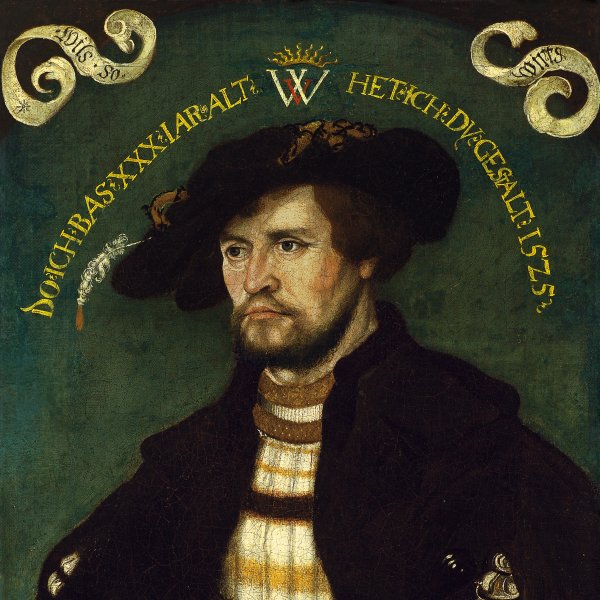Attributed to Hans Wertinger
Landshut, ca. 1465/70 -1533
Wertinger was a German painter and engraver, born between 1465 and 1470. His family were from Wertingen to the northeast of Augsburg and it is possible that he trained in his native city or in Munich in the circle of Jan Polack. Wertinger collaborated with the painter and stained-glass designer Sigmund Gleismüller. In 1491 he became a citizen of Landshut, a fact that has led to the suggestion that he was an independent master by that date. Wertinger’s first known work is The Legend of Saint Sigismund of 1498, painted for Freising cathedral. It reveals the influence of late Gothic painting in the colour and treatment of the figures, with their angular bodies and slightly elongated heads, as well an interest in anecdotal detail. Wertinger also painted a number of works for Philip, Count Palatine, and for the Elector Frederick of Saxony, which have not survived. From 1515 onwards his workshop received numerous commissions, not just for altarpieces but also for designs for stained glass, prints, miniatures for missals, frescoes and independent panel paintings.
Wertinger’s style evolved under the influence of Dürer, Altdorfer and the Danube School, his colour became softer and he placed increasing importance on landscape, as is evident in his portrait backgrounds. He was employed as court painter to Duke Louis X of Bavaria-Landshut, while notable portraits by his hand include that of the Prince-Bishop Philip of Freising (Alte Pinakothek, Munich). Two series of paintings of the months and the seasons (most of them in the Germanisches Nationalmuseum, Munich) are considered to be his masterpieces and also reveal the ongoing evolution of his style. Wertinger died in Landshut in 1533 but his work continued to be an important reference point for painting in that region.
Wertinger’s style evolved under the influence of Dürer, Altdorfer and the Danube School, his colour became softer and he placed increasing importance on landscape, as is evident in his portrait backgrounds. He was employed as court painter to Duke Louis X of Bavaria-Landshut, while notable portraits by his hand include that of the Prince-Bishop Philip of Freising (Alte Pinakothek, Munich). Two series of paintings of the months and the seasons (most of them in the Germanisches Nationalmuseum, Munich) are considered to be his masterpieces and also reveal the ongoing evolution of his style. Wertinger died in Landshut in 1533 but his work continued to be an important reference point for painting in that region.





